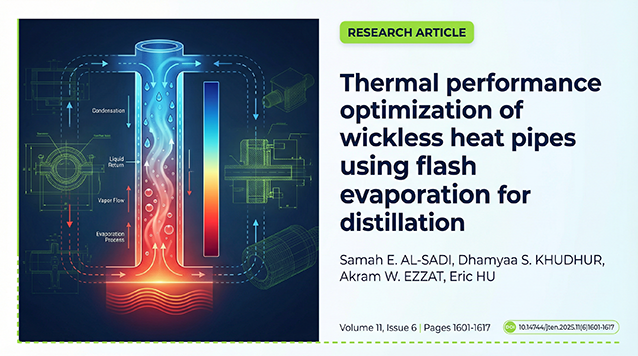2Department of Mechanical Engineering, Sharif University of Technology, Tehran, Iran
3School of Mechanical Engineering, College of Engineering, University of Tehran, Iran
4Department of Chemical Engineering, College of Engineering, University of Tehran, Iran
5Faculty of Engineering and Applied Science, University of Ontario Institute of Technology, 2000 Simcoe St. North, Oshawa, Ontario, L1G 0C5, Canada
Abstract
Low-temperature geothermal heat sources have the highest share of geothermal energy in the world. Utilization of these heat sources for energy and freshwater generation can play an important role in meeting energy and freshwater demands. To do so, this study aims to propose a novel trigeneration cycle powered by low temperature geothermal sources. The proposed system, which is an integration of Kalina and humidification-dehumidification (HDH) cycles, is used for the generation of electricity, heating, and freshwater. For the Kalina cycle, an evaporative condenser is used. It also acts as a humidifier and heater of the humidification-dehumidification desalination cycle, resulting in a reduction in thecomplexity of the trigeneration system. A comprehensive thermoeconomic analysis and multi-objective optimization of the new trigeneration system are performed. First, a detailed parametric study is carried out to investigate the effects of key design parameters, including turbine inlet pressure, condenser temperature, basic solution ammonia concentration, air mass flow rate and heat source temperature, on the thermoeconomic criteria. Then, a multiobjective optimization is conducted to determine the best design parameters, considering
exergy and total cost rate as the objective functions. The optimal solution Pareto frontier indicates that the exergy efficiency and total cost rate vary in the range of 14.9–41.6% and 1.13–2.19 $/h, respectively. Analyses of the scattered distributions of design parameters reveal that lower heat source temperatures tend to optimize the objective functions. However, altering other design parameters has a significant effect on the trade-off between exergy efficiency and total cost rate.























